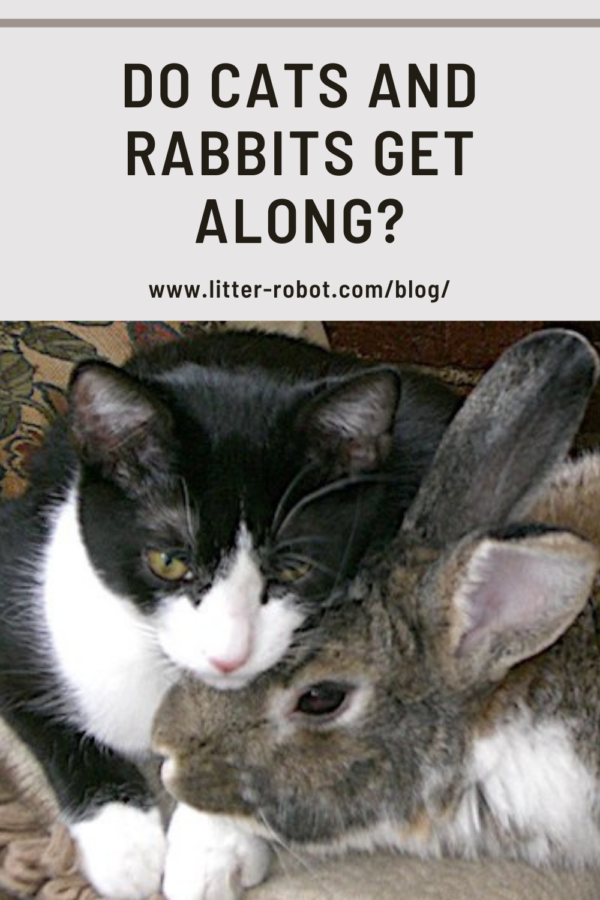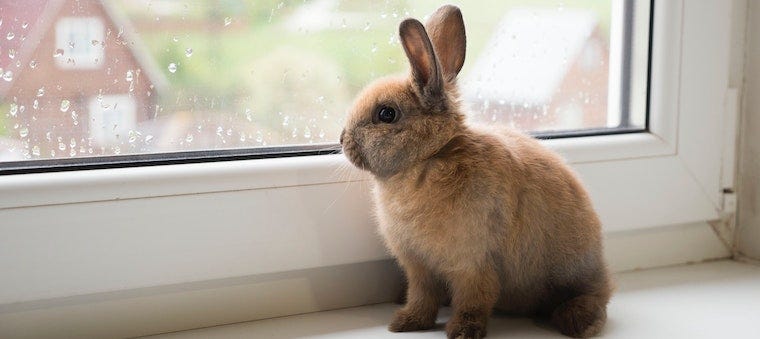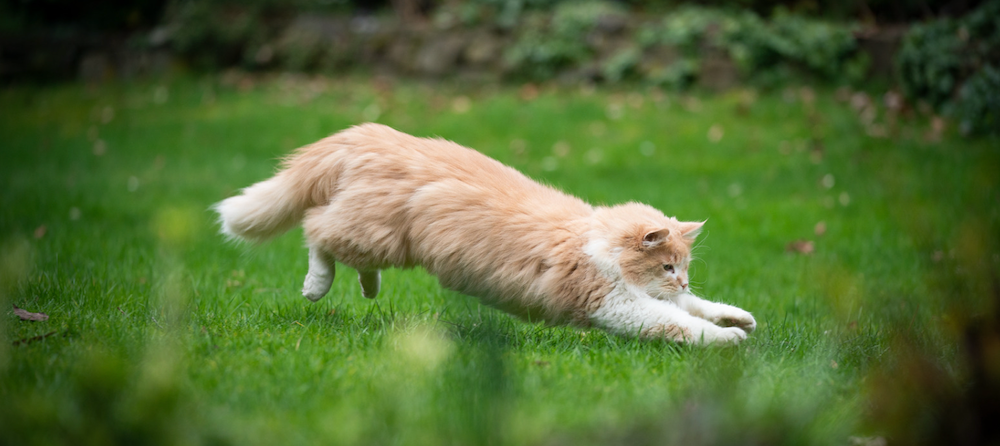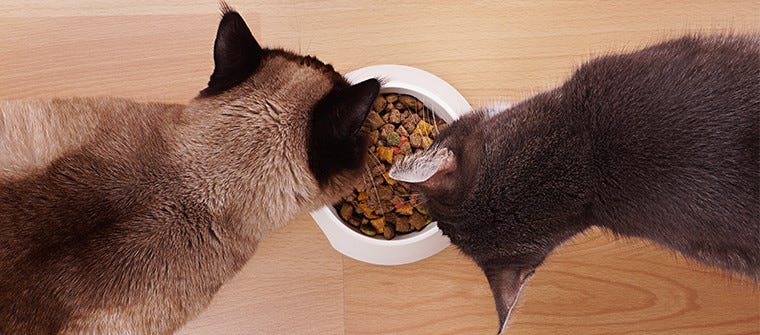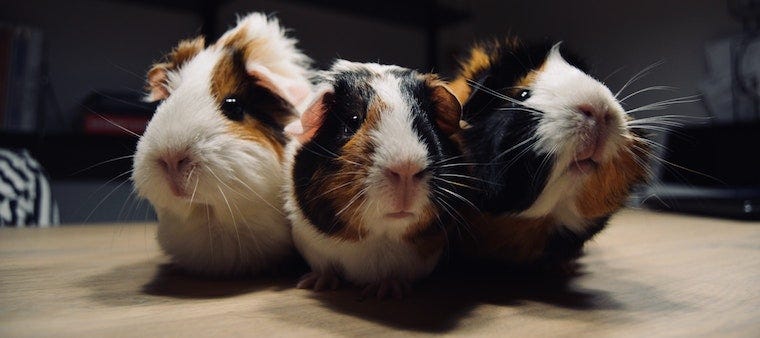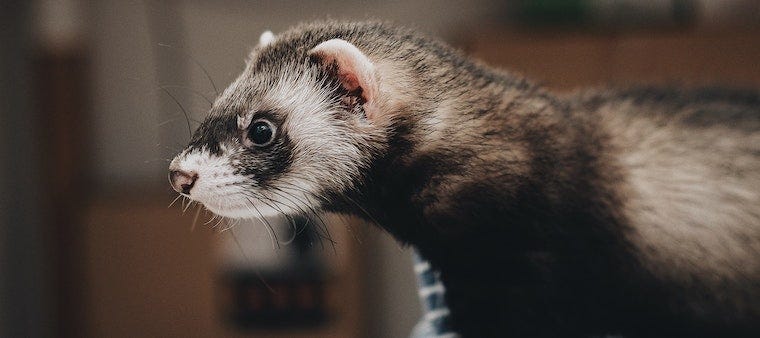Springtime sees an increase in pet bunny adoptions. If you’re looking to expand your pet family, you’ll first need to consider how different species in the household may interact. Say you already have a feline in the house: Do cats and rabbits get along? And is it safe to have both as pets? Keep reading to find out! (Note: If you are interested in adopting a rabbit, please do so responsibly for the long-term. Sadly, many pet rabbits are surrendered 1-3 months after the Easter holiday.)
The facts: Cats are predators, rabbits are prey
Cats are obligate carnivores—in fact, you might even consider them apex predators. Rabbits, of course, are herbivores. In the wild, rabbits commonly serve as prey to larger carnivores and omnivores.
But do cats and rabbits get along? Sometimes
Just because two animals represent a predator-prey relationship doesn’t mean they can’t coexist peacefully. Important factors for how cats and rabbits may get along include:
- Age of introduction
- Temperament of both animals
- Size/breed of rabbit
Age of introduction
The best time to introduce cats and rabbits is when both animals are young, even babies. While it is not hopeless that an adult cat will accept a new bunny family member, or vice-versa, such a situation is more precarious.
Temperament of both animals
According to The Nest, cats and rabbits have the best chance of getting along when the cat is “calm and submissive” and the rabbit is “assertive, but not aggressive.” (In other words, the rabbit needs to be able to politely show who’s boss!) Furthermore, a submissive rabbit that lives in constant fear is likely to develop gut stasis—which in itself can be life-threatening.
Generally, breed doesn’t play a critical role in how “predatory” a cat is. Many cats are considered great mousers. However, certain breeds are known for their strong prey drive—including Savannah cats and Lykoi cats—and may therefore not make the best companions of rabbits, birds, and other small pets.
Size/breed of rabbit
Matching up cats and rabbits that are (or will grow to be) similar in size is a smart idea. Some rabbit breeds grow as large as medium-sized domestic house cats, including the Checkered Giant, French Lop, and Giant Chinchilla. And some—like the Flemish Giant—can actually outweigh the average cat!
How to introduce cats and rabbits
Even when cats and rabbits are introduced at the right age, have compatible temperaments, and are of comparable sizes, close supervision is critical. Keep these tips in mind if you’re ready to find out the answer to the question: Do cats and rabbits get along?
Remember: If the cat is too aggressive or the rabbit too submissive, be prepared for the possibility that the animals may always need to be separated—and that it might be better to rehome one of them.
Vaccinate and spay/neuter
Make sure both of the animals are vaccinated as is appropriate for their age. Certain diseases (like rabies) can easily spread between species. And with that in mind, be sure to keep your cat’s nails trimmed!
We also recommend spaying and neutering both cats and rabbits. Not only is it better for both animals long-term, spaying and neutering will help reduce aggression and territorial instincts.
Introduce them slowly
Cats and rabbits should reside in separate places in the house, at least early on. Allow them to observe and securely interact with one another with some means of separation between them:
- First, keep the rabbit in his cage. Allow the cat to watch and even sniff the cage. Make sure the rabbit has a hutch he can hide in if he feels threatened.
- Next, turn the tables: Allow the rabbit out of the cage while keeping your cat restrained. Do this when both animals are feeling relaxed and have been recently fed. Either keep your cat in a carrier or in a leashed harness.
- Allow the cat and rabbit to interact freely while your cat is still leashed. That way you can restrain your cat if there is sudden trouble.
- As both animals get more comfortable, let your rabbit assert himself—he may even appear to charge your cat. Your cat will back off or get away from the rabbit if feeling comfortable.
- Keep in mind that if your rabbit runs, your cat may see the rabbit as prey and chase him. If that happens, separate the animals immediately and begin the process of introducing them over again, going more slowly this time.
Play with your cat separately
Carve out time every day to play with your cat without the rabbit around. Not only is exercise important for your cat, but it’s best to satisfy your cat’s drive to hunt in ways that (of course) don’t involve the rabbit. Encourage your cat to chase a wand with a feather, interact with a laser pointer toy, or toss around catnip toys to “play hunt.”
So, do cats and rabbits get along? Under the right circumstances, some cats and rabbits can get along. Just be sure to put the needs of both animals above your own desire to add a new member to your pet family.
Sources:
